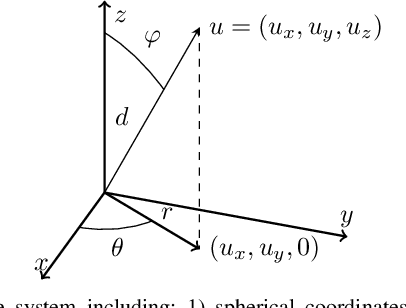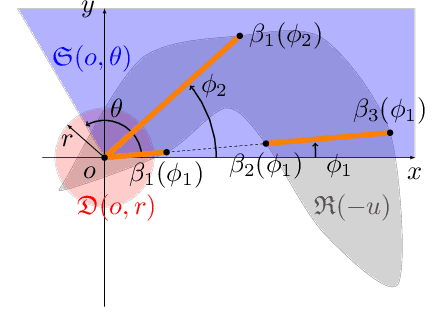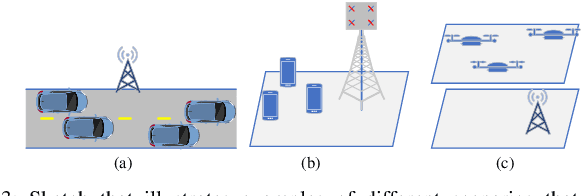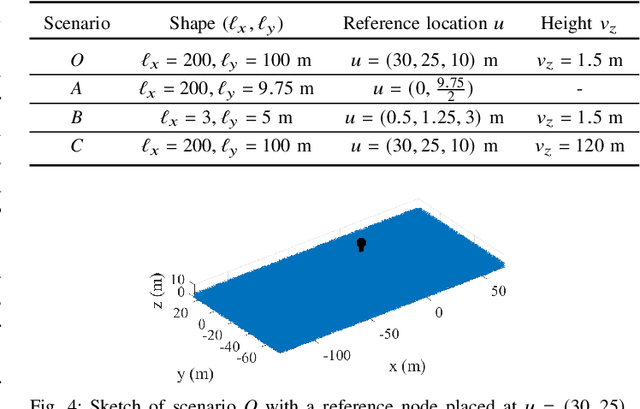David Morales-Jiménez
Metasurface-based Fluid Antennas: from Electromagnetics to Communications Model
Jul 23, 2025



Abstract:Fluid antenna systems (FASs) have become a popular topic in the wireless community as an effective yet simple means of exploiting spatial diversity. Due to the limitations of physically moving radiating elements, electronically reconfigurable antennas are emerging as practical implementations of FASs, since changing the radiation pattern is functionally equivalent to physically moving the device. However, electronically reconfigurable antennas pose a challenge in terms of analytical modeling, often requiring full-wave simulations or measurements for their characterization; this severely limits the extraction of theoretical insights useful for system design. Motivated by these difficulties and the growing interest in FASs, we propose in this paper a complete analytical model for metasurface-based embodiments of FASs. Specifically, we advocate for the implementation of the FAS concept through dynamic metasurface antennas (DMAs), hitherto proposed as array replacements in multiple-input multiple-output (MIMO) systems. We leverage circuit theory to rewrite the conventional signal model of FASs in terms of admittance matrices accounting for the electromagnetic effects inherent to metasurfaces. The model is validated with full-wave simulations, showing good agreement. We further illustrate how to apply the model for standard performance analysis, and provide closed-form expressions for key metrics, including the resulting signal covariance matrix. Results confirm that practical DMA-based FASs can achieve similar performance to that of idealized implementations of position-flexible antennas.
Energy efficiency of DMAs vs. conventional MIMO: a sensitivity analysis
Jun 10, 2025Abstract:Motivated by the stringent and challenging need for `greener communications' in increasingly power-hungry 5G networks, this paper presents a detailed energy efficiency analysis for three different multi-antenna architectures, namely fully-digital arrays, hybrid arrays, and dynamic metasurface antennas (DMAs). By leveraging a circuital model, which captures mutual coupling, insertion losses, propagation through the waveguides in DMAs and other electromagnetic phenomena, we design a transmit Wiener filter solution for the three systems. We then use these results to analyze the energy efficiency, considering different consumption models and supplied power, and with particular focus on the impact of the physical phenomena. DMAs emerge as an efficient alternative to classical arrays across diverse tested scenarios, most notably under low transmission power, strong coupling, and scalability requirements.
Joint Distribution of Distance and Angles in Finite Wireless Networks
Mar 29, 2022



Abstract:Directional beamforming will play a paramount role in 5G and beyond networks in order to combat the higher path losses incurred at millimeter wave bands. Appropriate modeling and analysis of the angles and distances between transmitters and receivers in these networks are thus essential to understand performance and limiting factors. Most existing literature considers either infinite and uniform networks, where nodes are drawn according to a Poisson point process, or finite networks with the reference receiver placed at the origin of a disk. Under either of these assumptions, the distance and azimuth angle between transmitter and receiver are independent, and the angle follows a uniform distribution between $0$ and $2\pi$. Here, we consider a more realistic case of finite networks where the reference node is placed at any arbitrary location. We obtain the joint distribution between the distance and azimuth angle and demonstrate that these random variables do exhibit certain correlation, which depends on the shape of the region and the location of the reference node. To conduct the analysis, we present a general mathematical framework which is specialized to exemplify the case of a rectangular region. We then also derive the statistics for the 3D case where, considering antenna heights, the joint distribution of distance, azimuth and zenith angles is obtained. Finally, we describe some immediate applications of the present work, including the analysis of directional beamforming, the design of analog codebooks and wireless routing algorithms.
 Add to Chrome
Add to Chrome Add to Firefox
Add to Firefox Add to Edge
Add to Edge